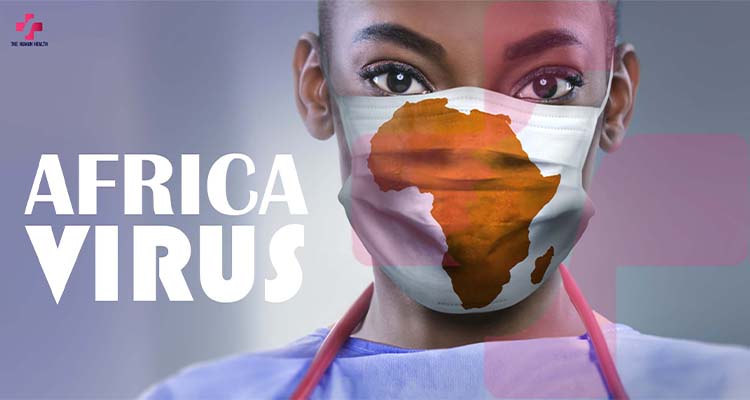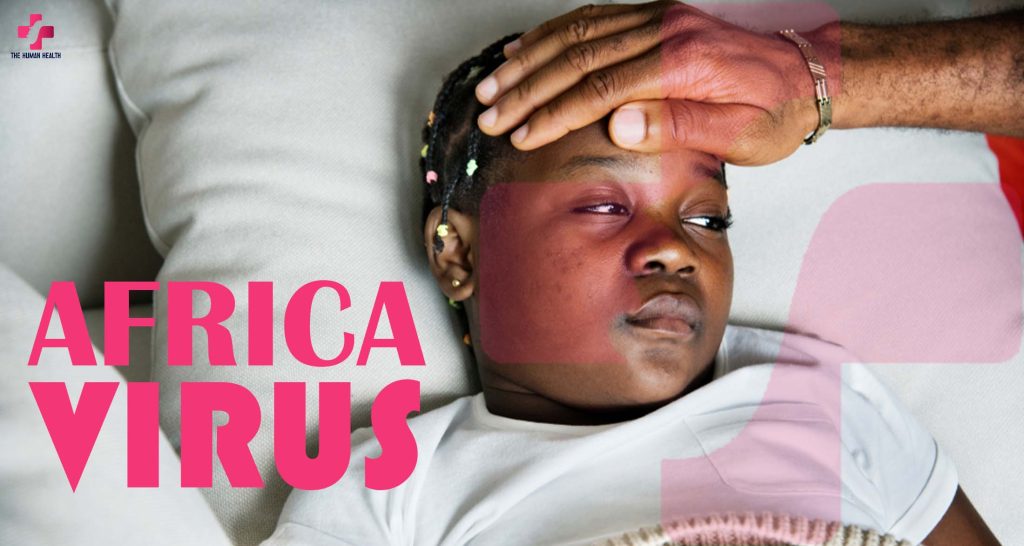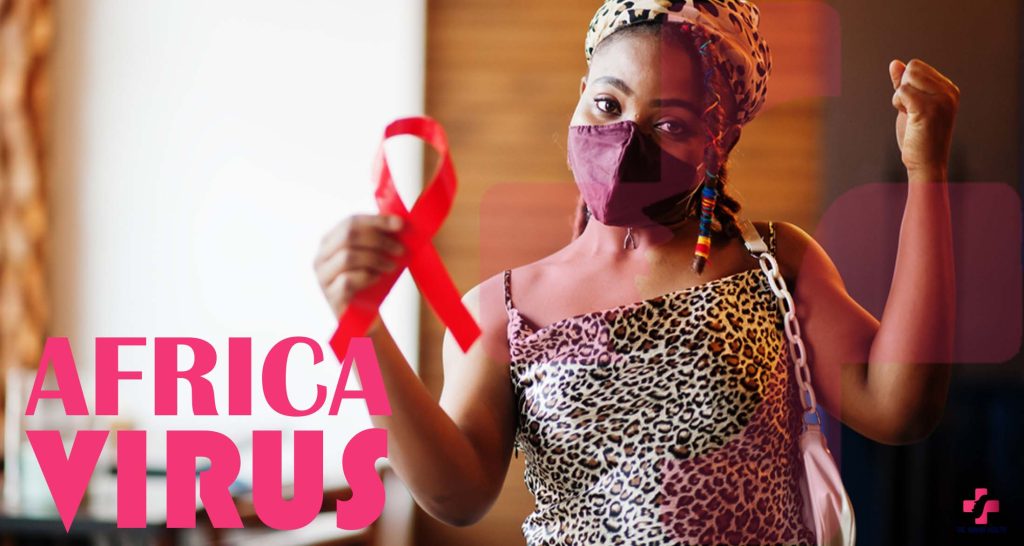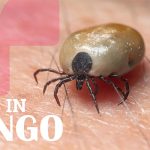Viruses in Africa
Africa has faced many dangerous viruses, like smallpox, Ebola, and COVID-19. These diseases spread fast because of weather, crowded cities, and weak healthcare. Many people do not get the medical help they need. Travel also spreads diseases quickly
Common Viruses
Africa has many viruses. Some, like malaria, stay in one area. Others, like Ebola, spread suddenly.
Ebola is one of the deadliest viruses. It was first found in 1976 in the Democratic Republic of the Congo. The worst outbreak was in West Africa from 2014 to 2016, killing over 11,000 people. Another deadly virus is Marburg, which is similar to Ebola.
HIV/AIDS is also a big problem. It weakens the immune system. Many people in Africa are affected. Medicine helps, but more education and treatment are needed.
Why Viruses Spread
Several things cause virus outbreaks:
Nature – Africa has forests and animals that carry viruses. People get sick when they come into contact with them.
Big Cities – Many people live close together without clean water or toilets. This helps viruses spread.
Weak Healthcare – Many hospitals do not have enough doctors or medicine. This makes it hard to stop outbreaks.
Travel – People move between cities and countries. This spreads viruses fast.
Fighting Viruses
Africa is working hard to stop viruses. Groups like the Africa CDC and WHO help with testing and treatment.
Vaccines are helping with diseases like Ebola and malaria. Scientists are also working on better HIV medicine. More support and research will help fight these diseases.
Conclusion
Viruses are still a big problem in Africa. But with better healthcare, research, and teamwork, Africa can stop more outbreaks and save lives.
What is This? Africa Virus
Africa has many viruses. Some of the most well-known are Ebola, Marburg, Lassa fever, and Rift Valley fever.
Ebola – This virus can make people bleed and can be deadly. It spreads when people or animals touch body fluids from an infected person. The biggest outbreak was in West Africa from 2014 to 2016.
Marburg – Marburg is like Ebola. It can also cause bleeding. It comes from bats. The virus was first found in Germany, but it probably started in African monkeys.
Lassa Fever – Lassa fever is in West Africa. It spreads through rats’ urine or poop. It is less deadly than Ebola, but it’s still a health problem.
Rift Valley Fever – This virus mainly affects animals. People can get it from mosquitoes or by touching infected animals. It happens after a lot of rain.
HIV/AIDS – HIV started in Central Africa. It spread when people ate bushmeat or touched infected animals. Today, Africa has the most HIV cases.
Zika – Zika mostly affects Latin America, but it started in Uganda’s Zika Forest. It spreads through mosquitoes and can cause problems for pregnant women.
Why Does This Happen?
“Africa virus” doesn’t refer to one virus. It means many viruses that affect parts of Africa. These viruses are more common in Africa for several reasons.
First, Africa has a special environment. Some viruses, like Ebola and HIV, spread through animals and insects. Many animals in Africa carry these viruses. For example, bats can spread Ebola. Humans can get sick if they touch animals that are sick.
Next, Africa’s hot, wet climate is good for mosquitoes. Mosquitoes spread diseases like malaria and yellow fever. These diseases are common in Africa. Changes in the climate, like more rain, help mosquitoes spread.
The healthcare system also makes things harder. Some African countries don’t have enough doctors, hospitals, or supplies. This makes it hard to stop viruses from spreading. There are also not enough vaccines for diseases like yellow fever or measles.
Social problems also help viruses spread. In poor areas, it’s easy for diseases to spread. People in poverty might not get the healthcare they need. War and moving around can also spread diseases.
In the end, viruses in Africa are common because of nature, climate, healthcare, and social problems. We’ve made some progress, but more work is needed to help people stay healthy.
What Can Be This Harm? Africa Virus
“Africa Virus” is not a single disease. It can refer to different viruses in Africa. Some are dangerous and spread quickly. These include Ebola, HIV, Marburg, and Monkeypox.
Ebola is one of the most known. It spreads fast and can be deadly. The virus moves through contact with sick people or animals. This makes it hard to stop, especially in places with few doctors or hospitals. Ebola also causes fear, and people may avoid those who are sick.
HIV is another virus that affects many people in Africa. It spreads through unprotected sex, shared needles, or from mother to child during birth. Since the 1980s, HIV has killed millions, mostly in sub-Saharan Africa. Though treatments have improved, it remains a big challenge.
Marburg is a deadly fever, like Ebola. It comes up now and then in Africa, with high death rates.
Monkeypox, a virus related to smallpox, has spread more widely in recent years. Though it is less deadly than Ebola, it still causes concern.
These diseases, along with others like Zika and Lassa fever, show how serious health risks are in Africa. They also highlight the need for better healthcare and global help to stop outbreaks.
Is There an Age Limit for This? Africa Virus
People often ask if there is an age limit for getting or surviving viruses in Africa. Viruses like Ebola, HIV, and Marburg can affect people in different ways. Age, health, and the immune system play a big role. But is there an age when people are most at risk?
Young children and older adults are at a higher risk. Their immune systems are weaker. Babies have immune systems that are still growing and may not fight off viruses like Ebola. Older adults may have weaker immune systems because of age or other health issues.
Still, age is not the only thing that matters. Some viruses, like HIV, can affect people of all ages. In Africa, many children are born with HIV, and many adults get it through sex or shared needles.
The Marburg virus is another example. There isn’t a clear age limit, but people with health problems or weaker immune systems are at higher risk. The virus has a high death rate, and older people or those with health issues may not survive as easily.
In the end, age is just one factor. Healthcare, local disease control, and overall health are also important for survival.
What Are The Signs of This Happening?
The “Africa Virus” can refer to different viruses, such as Ebola, HIV/AIDS, or Marburg. These viruses show different signs, but some are common.
Fever and Flu Symptoms: Many viral infections, like Ebola and Marburg, start with fever, chills, and muscle aches. These symptoms can look like other common sicknesses, making it hard to tell at first.
Stomach Problems: Diarrhea, vomiting, and stomach pain are common signs. If not treated, these can cause dehydration and make the person feel worse.
Bleeding: Viruses like Ebola and Marburg can cause serious bleeding. This includes bleeding inside the body and from the eyes, nose, mouth, and ears. This needs quick medical help.
Breathing Problems: Difficulty breathing, coughing, or chest pain can happen. This means the virus might be affecting the lungs or other parts of the body.
Swollen Lymph Nodes: Swelling in the lymph nodes happens as the immune system fights the virus. It is a clear sign in some outbreaks.
Brain Problems: Some viruses, like Ebola, can cause confusion, seizures, and even coma. These signs happen when the virus affects the brain.
Outbreaks in Specific Areas: Sometimes the virus spreads fast in certain places. Many cases in one area mean a new virus might be spreading.
Knowing these signs can help find the virus early. Early treatment can stop the virus from spreading.
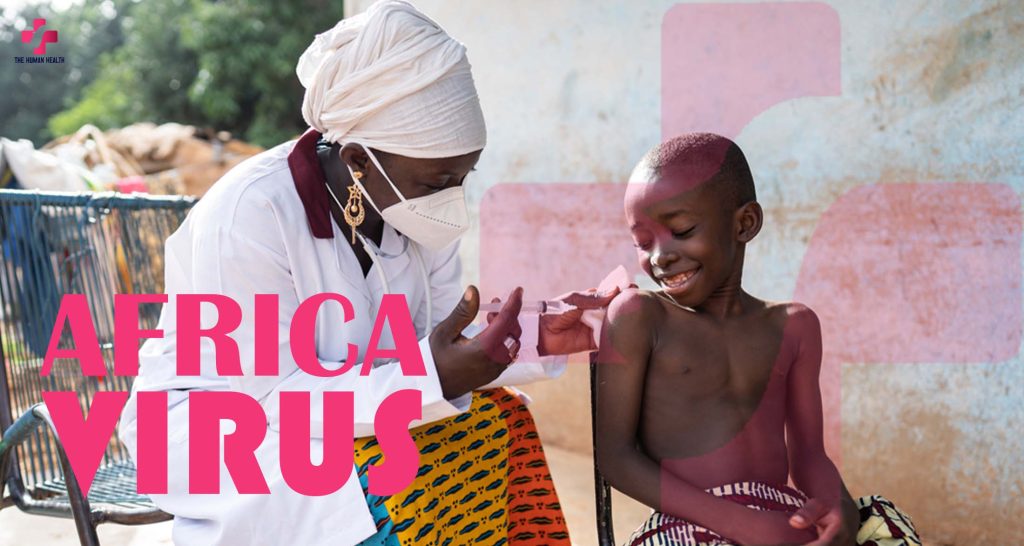
What Are The Ways to Avoid This?
To stop the spread of viruses in Africa, we can do many things. Here are some easy ways to help:
- Wash Hands:
Wash your hands with soap and water. If you can’t, use hand sanitizer. Always cover your mouth when you cough or sneeze. Throw used tissues away to stop germs from spreading. - Get Vaccinated:
Vaccines can stop diseases like measles, yellow fever, and polio. They help protect people and stop outbreaks. - Control Mosquitoes:
In areas where diseases like malaria or Zika spread through mosquitoes, we can control them. Use nets, spray insect repellent, and remove standing water where mosquitoes breed. - Clean Water and Sanitation:
Having clean water and good sanitation helps stop diseases like cholera and typhoid. Make sure people have clean drinking water and safe ways to dispose of waste. - Spread the Word:
Teach people about washing hands, signs of sickness, and when to see a doctor. Health campaigns can help both in cities and villages. - Isolate Sick People:
If someone gets sick, keep them away from others until they are better. This helps stop the virus from spreading.
By following these simple steps, Africa can reduce the spread of viruses and keep people safe.
How Dangerous Is the Marburg Virus?
The Marburg virus is a deadly germ like the Ebola virus. It causes Marburg virus disease (MVD), a sickness that leads to heavy bleeding and organ failure. The virus is dangerous because it spreads fast, has a high death rate, and has no cure.
Symptoms and Severity
Marburg virus disease is very deadly. Between 24% and 90% of infected people die, depending on medical care. Symptoms start 2 to 21 days after infection. At first, it feels like the flu, with fever, headache, muscle pain, chills, and tiredness. Later, symptoms get worse, leading to vomiting, diarrhea, stomach pain, and weakness.
A big danger of MVD is internal bleeding. People may bleed from their gums, nose, eyes, and other places. In serious cases, the disease causes organ failure and death. It spreads fast and kills many, making it one of the most dangerous viruses.
How It Spreads
Marburg virus comes from animals and spreads to humans. It lives in Egyptian fruit bats (Rousettus aegyptiacus), which carry the virus without getting sick. People get sick when they go into caves or mines with bats. Once in humans, it spreads through direct contact with fluids like blood, saliva, vomit, pee, and poop from an infected person.
Doctors, caregivers, and family members are at high risk, especially in places without good health care. Dirty medical tools and surfaces can also spread the virus. Marburg does not spread through air, but close contact can pass it on.
Since 1967, the virus has caused many outbreaks, mostly in Africa. Countries affected include Angola, Uganda, Kenya, the Democratic Republic of Congo, and Guinea. The worst outbreak happened in Angola in 2004–2005, where 90% of infected people died. These outbreaks show how fast the virus spreads if not stopped.
Treatment and Prevention Challenges
There is no vaccine or cure for Marburg virus disease. Doctors can only give fluids, oxygen, and treat symptoms. Since the disease worsens fast, early care can help people survive.
Scientists are working on vaccines and treatments, but none are ready yet. Some test drugs look good, but more study is needed.
To stop the virus, strong health rules are needed. This includes finding cases fast, keeping sick people away from others, washing hands often, and teaching people to avoid sick animals.
Conclusion
The Marburg virus is very dangerous. It kills fast, spreads quickly, and has no cure. Though rare, outbreaks cause panic because the disease is so deadly. Stopping the virus needs quick action, more research on vaccines, and teaching people how to stay safe.

Can Marburg Virus Be Treated?
Marburg virus disease (MVD) is a rare and deadly illness. It comes from the Marburg virus, which is like the Ebola virus. It causes high fever, bleeding, and organ failure. Many people who get it do not survive. So, can doctors treat it?
Right now, there is no medicine or vaccine that cures Marburg virus. Other diseases, like the flu or HIV, have treatments, but Marburg does not. Still, scientists are working hard to find one.
Doctors focus on helping patients feel better. They do this by:
Giving Fluids: Patients lose a lot of water through vomiting and diarrhea. IV fluids help them stay hydrated.
Providing Oxygen: If breathing is hard, extra oxygen helps.
Easing Pain and Fever: Acetaminophen (paracetamol)
helps with pain and fever. Doctors avoid aspirin and ibuprofen because they cause more bleeding.
Giving Blood: Since the virus causes heavy bleeding, some people need extra blood.
Stopping Other Infections: Marburg weakens the body, making it easier to get other infections. Antibiotics can help with this.
Some new treatments are being tested. These include:
Lab-Made Antibodies – These are special proteins that fight the virus. Some made for Ebola are now being tested for Marburg.
Antiviral Drugs – Some medicines, like Remdesivir, might help. Scientists are still studying them.
RNA Treatments – These stop the virus from spreading inside the body.
Plasma Therapy – Doctors use blood from people who got better to help sick patients. It is still being tested.
Scientists are also working on a vaccine. In 2023, doctors began testing one based on the Ebola vaccine. If it works, it could stop future outbreaks.
For now, there is no cure. But with early care, some patients can survive. Scientists are working hard to find better treatments.
What Is the Deadliest Virus in the World?
Viruses have caused big problems for humans for a long time. Some cause mild illness, while others are much more serious. Some viruses are more deadly than others. The deadliest virus depends on how many people it kills, how fast it spreads, and how much it impacts the world. Among the deadliest viruses are the Marburg virus, Ebola, Rabies, and HIV. Marburg is often called the deadliest because of how many people it kills.
The Marburg Virus
The Marburg virus is related to the Ebola virus. It was first discovered in 1967 in Germany and Serbia. It spread to workers in a lab who were exposed to monkeys from Uganda.
Marburg causes a severe fever. Symptoms include a high fever, headache, muscle pain, vomiting, diarrhea, and bleeding. The virus spreads when people touch the body fluids of someone who is sick. The death rate can reach 88%, making it very deadly. There is no cure, but doctors can help by giving fluids and treating pain.
Other Deadly Viruses
While Marburg is one of the deadliest, other viruses have caused a lot of harm too.
Ebola Virus – Ebola is in the same family as Marburg. It spreads through body fluids and causes high death rates, ranging from 25% to 90%.
Rabies Virus – Rabies kills almost everyone who gets it once symptoms start. It affects the brain and can cause confusion, paralysis, and death. However, if treated right away after a bite, rabies can be stopped.
HIV (Human Immunodeficiency Virus) – HIV does not kill quickly, but it has caused millions of deaths over time. It weakens the immune system, leading to AIDS. With the right treatment, people can live longer, but HIV is still a big global problem.
Smallpox Virus – Smallpox once killed up to 30% of those infected. It was wiped out in 1980 due to vaccines. But, for a long time, it was one of the deadliest viruses around.
Conclusion
The Marburg virus is often seen as the deadliest virus because of its high death rate. But other viruses, like Ebola, rabies, HIV, and smallpox, have also killed many people. Viruses can change quickly, so they are always a threat. More research, vaccines, and health efforts are needed to stop future outbreaks and save lives.
Africa Virus Conclusion?
The Africa Virus, or “African Virus,” is a big issue. It has affected many people in Africa. The virus spread quickly and caused many problems for people, health, and businesses.
First, the virus showed that Africa’s health systems need more support. Many places don’t have enough doctors, nurses, or medical supplies. This made it hard to treat everyone who got sick. Hospitals were full, and some areas needed more workers to help.
Second, the virus made life harder for some people. Those in poor areas and crowded cities had the hardest time. Many didn’t have good healthcare or enough medicine. People with other health problems were more likely to get very sick. The virus also hurt businesses. Many had to close, and people lost their jobs.
Still, Africa showed strength. Many countries worked together to fight the virus. They used new ways to test, track, and help people. The African Union and the World Health Organization helped get vaccines to the people who needed them.
In the end, the Africa Virus showed us how important it is to improve healthcare. We must work together and make sure the future is better. The lessons learned will help Africa fight future health problems.
Africa Virus Africa Virus Africa Virus Africa Virus Africa Virus Africa Virus Africa Virus Africa Virus v Africa Virus Africa Virus Africa Virus Africa Virus Africa Virus Africa Virus Africa Virus Africa Virus Africa Virus Africa Virus Africa Virus Africa Virus Africa Virus Africa Virus Africa Virus Africa Virus Africa Virus Africa Virus Africa Virus
